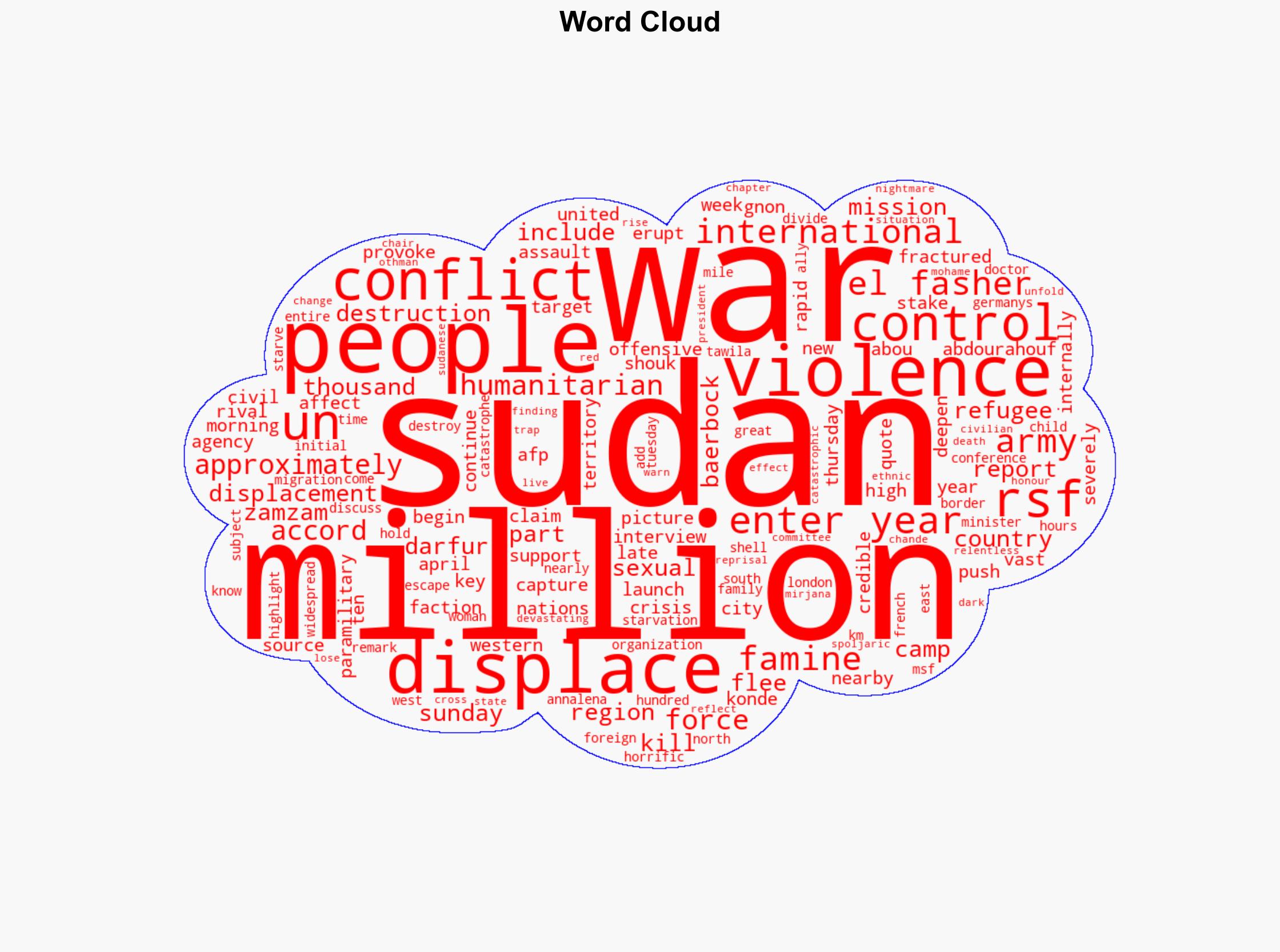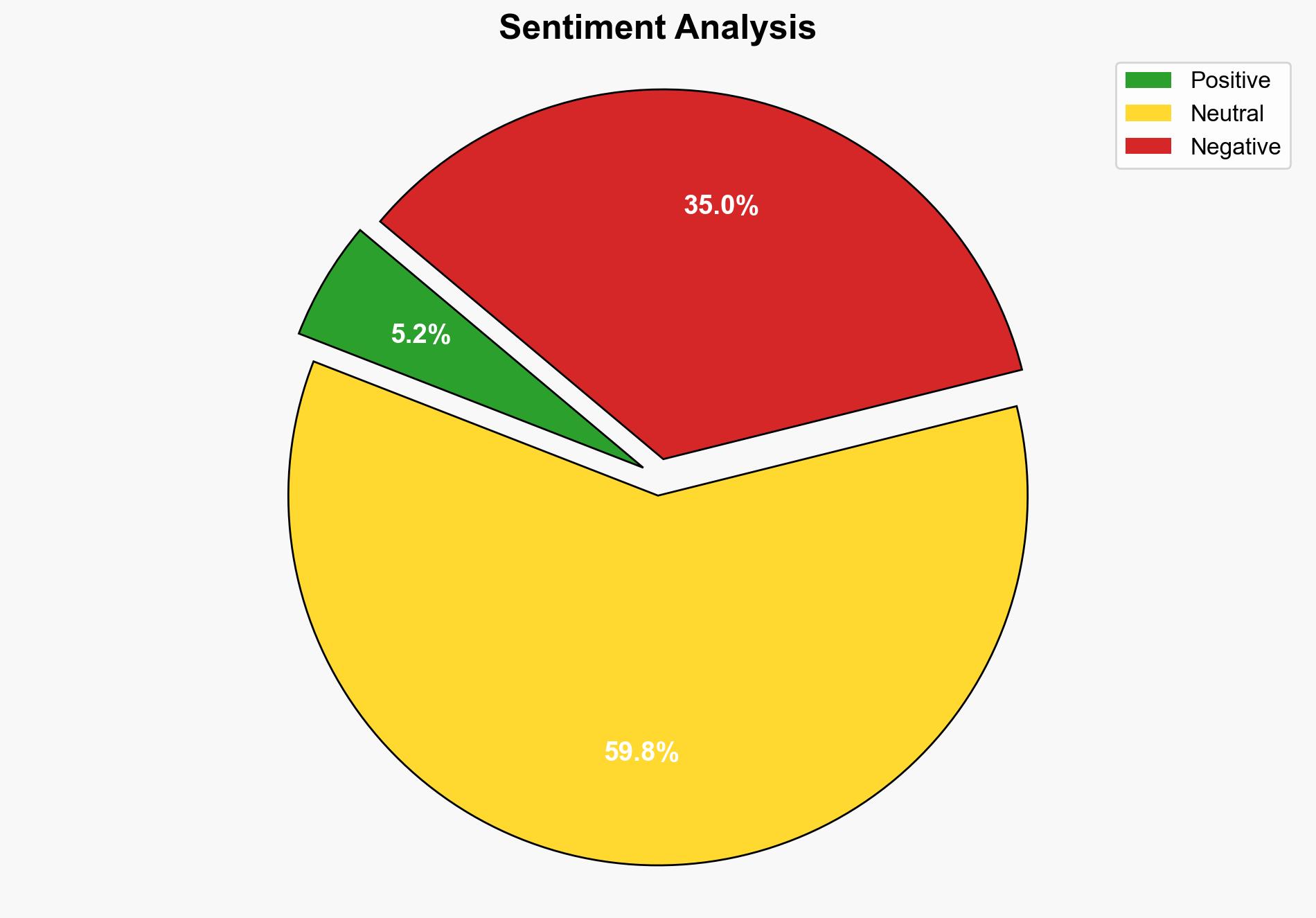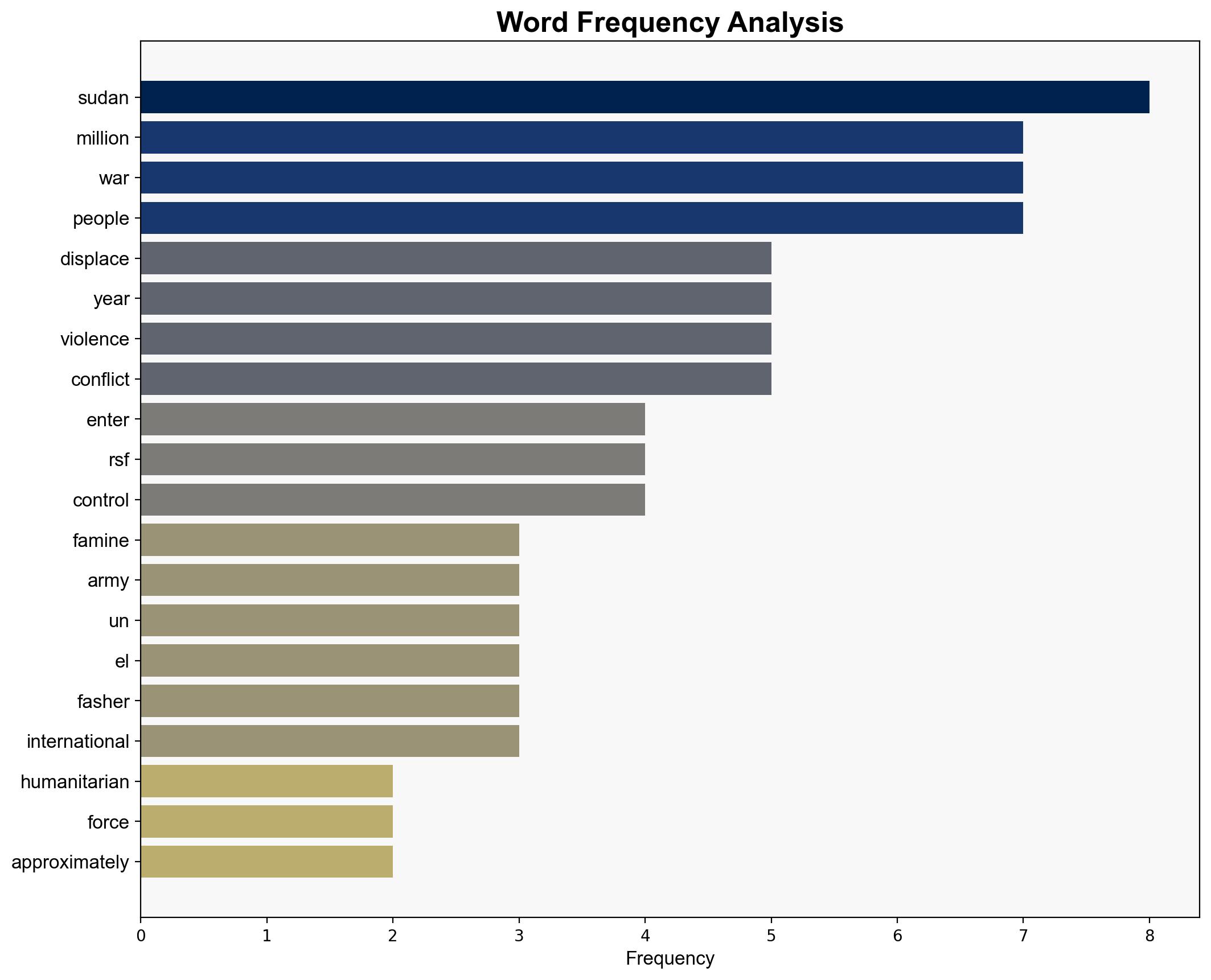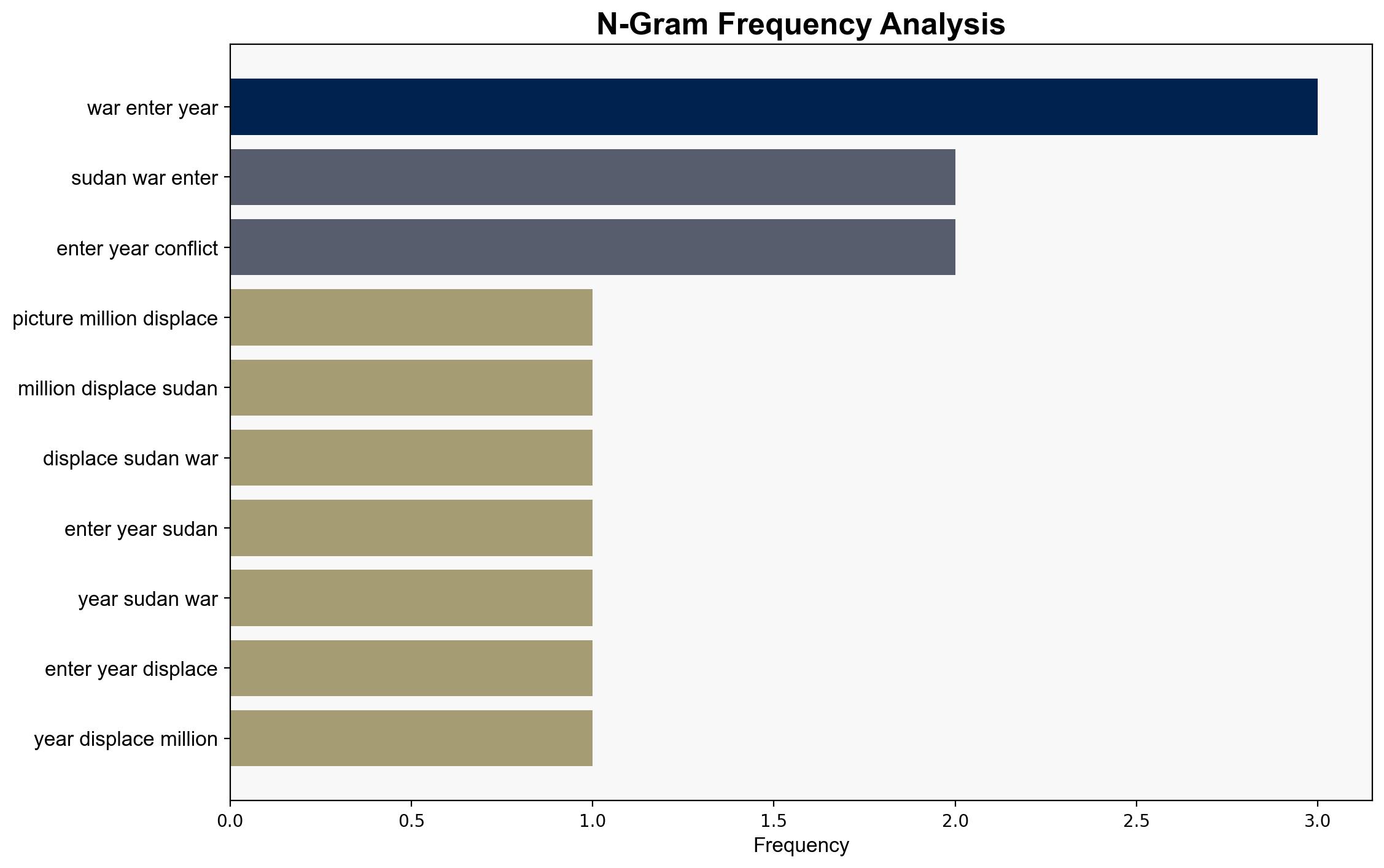Millions displaced as Sudan war enters third year – Al Jazeera English
Published on: 2025-04-15
Intelligence Report: Millions displaced as Sudan war enters third year – Al Jazeera English
1. BLUF (Bottom Line Up Front)
The ongoing conflict in Sudan, now entering its third year, has resulted in the displacement of approximately 13 million individuals, with significant humanitarian implications. The conflict, primarily between the army and the Rapid Support Forces (RSF), has led to widespread famine, violence, and territorial fragmentation. Immediate international intervention is required to address the humanitarian crisis and stabilize the region.
2. Detailed Analysis
The following structured analytic techniques have been applied for this analysis:
General Analysis
The conflict in Sudan has displaced 13 million people, including 8.6 million internally displaced individuals and 3.8 million refugees. The RSF’s recent offensive in Darfur, particularly targeting el-Fasher and nearby camps, has exacerbated the humanitarian crisis. Over 400 fatalities have been reported in the latest violence, with significant displacement from Zamzam camp. The conflict has divided Sudan into territories controlled by the army and RSF, with severe implications for civilian safety and regional stability.
3. Implications and Strategic Risks
The ongoing conflict poses significant risks to national security and regional stability. The humanitarian crisis, characterized by famine and violence, threatens to destabilize neighboring countries due to the influx of refugees. The division of Sudan into rival-controlled territories increases the risk of prolonged conflict and ethnic violence, potentially leading to further international intervention.
4. Recommendations and Outlook
Recommendations:
- Immediate international humanitarian aid is essential to address the famine and displacement crisis.
- Diplomatic efforts should focus on facilitating peace talks between conflicting parties to stabilize the region.
- Support for regional organizations to manage refugee influx and maintain border security is crucial.
Outlook:
Best-case scenario: Successful peace negotiations lead to a ceasefire, allowing humanitarian aid to reach affected areas and reducing displacement.
Worst-case scenario: Escalation of conflict results in further territorial fragmentation and increased ethnic violence, exacerbating the humanitarian crisis.
Most likely outcome: Continued conflict with intermittent ceasefires, maintaining high levels of displacement and humanitarian need.
5. Key Individuals and Entities
The report mentions significant individuals and organizations involved in the conflict and humanitarian response:
- Abdourahouf Gnon-Konde
- Annalena Baerbock
- Mirjana Spoljaric
- Mohamed Chande Othman
- United Nations
- International Organization for Migration
- Doctors Without Borders





